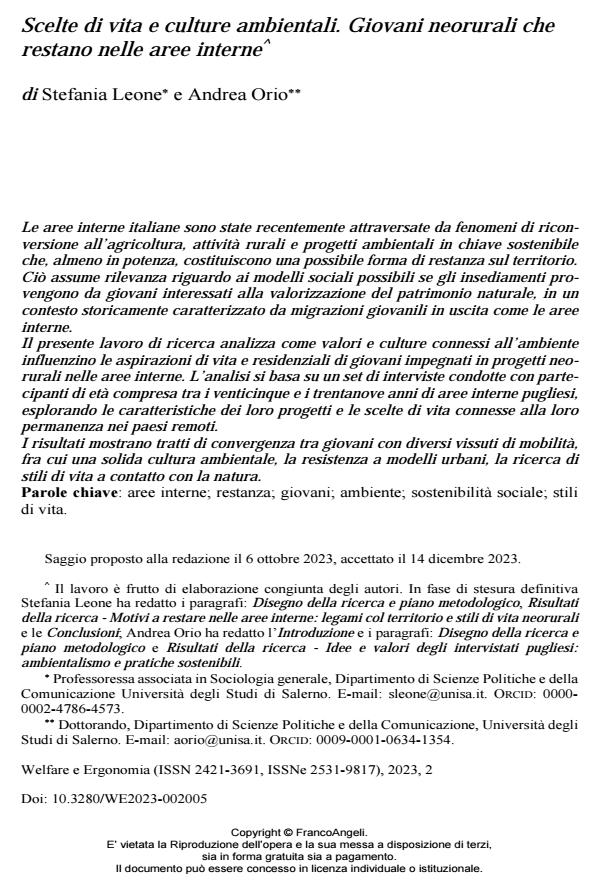Lifestyle choices and environmental cultures. Young neo-rurals who remain in inner areas
Journal title WELFARE E ERGONOMIA
Author/s Stefania Leone, Andrea Orio
Publishing Year 2024 Issue 2023/2
Language Italian Pages 15 P. 59-73 File size 209 KB
DOI 10.3280/WE2023-002005
DOI is like a bar code for intellectual property: to have more infomation
click here
Below, you can see the article first page
If you want to buy this article in PDF format, you can do it, following the instructions to buy download credits

FrancoAngeli is member of Publishers International Linking Association, Inc (PILA), a not-for-profit association which run the CrossRef service enabling links to and from online scholarly content.
The Italian inner areas have recently been characterized by a reconversion to agriculture in a sustainable way which – potentially – represents a form of remaining in the area. This becomes relevant regarding the possible social models if the settlements come from young people who valorise the natural resources, in a context historically characterized by youth emigration such as the inner areas. This research analyzes how values and cultures connected to the environment influence the life and residential aspirations of young people engaged in neo-rural projects in inner areas. The analysis is based on interviews conducted with young-adults (25-39 years) from the inner areas of Puglia, exploring the characteristics of their projects and their life and residential choices in remote municipalities. The results show similarities among young people with different mobility experiences, including a strong environmental culture, resistance to urban models and the search for lifestyles more in contact with nature.
Keywords: inner areas; restanza; young people; environment; social sustainability; lifestyles.
Stefania Leone, Andrea Orio, Scelte di vita e culture ambientali. Giovani neorurali che restano nelle aree interne in "WELFARE E ERGONOMIA" 2/2023, pp 59-73, DOI: 10.3280/WE2023-002005